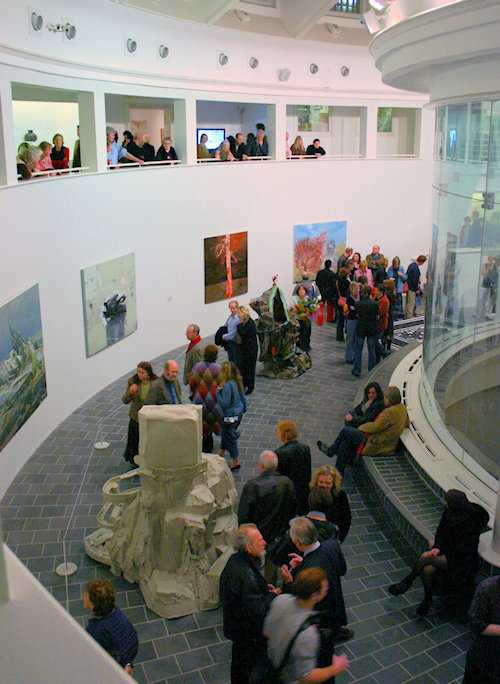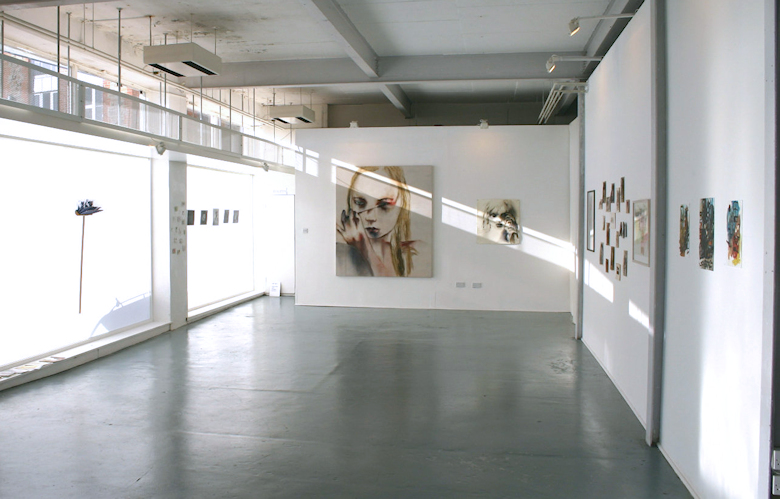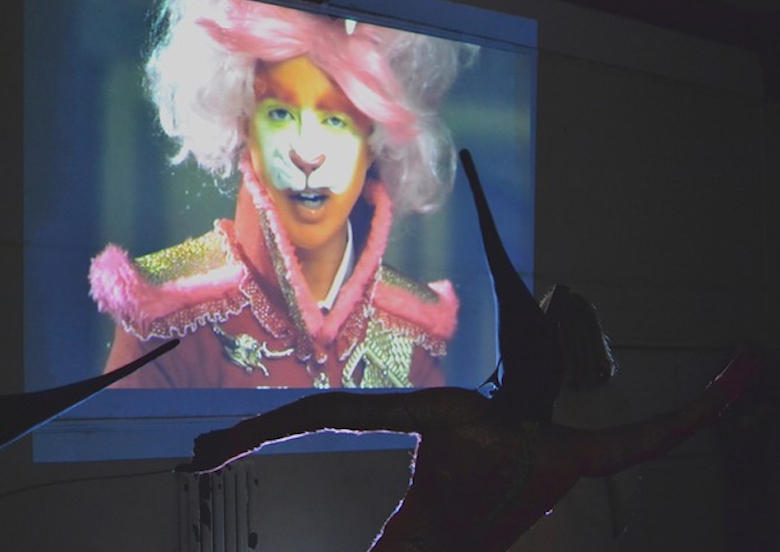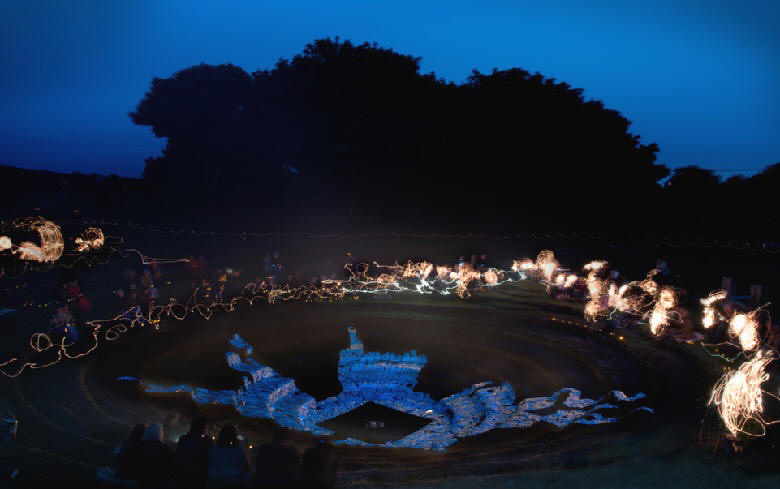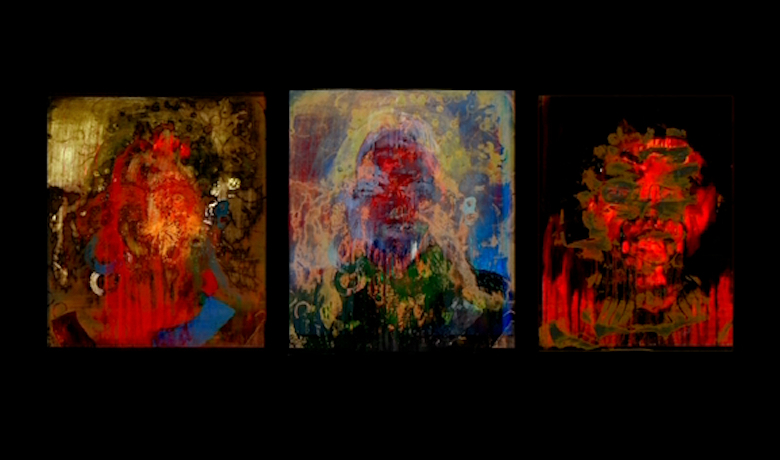|
|
| home | exhibitions | interviews | features | profiles | webprojects | archive |
|
Jesse Leroy Smith on Tremenheere, mentorship, friends and family Interview by Rupert White
Why did you come to Cornwall
originally?
My partner Sharon and I had just had
our first kid, and we had a house in London through ACME. There were
loads in Leytonstone - Michael Porter was there - two miles of
artist-houses and squats. It was an incredible time. Our house was
going to be knocked down to make way for a new road, but then they
decided to move the road, which gave us the chance to buy the house.
Sharon's Mum lent us some money, but only for two years.
After that we were thinking of going to Greece, but Sharon's Mum was in Zennor at the time of Patrick Heron's funeral. We came down to see them. Some friends from Momart were working at Eagle's Nest, packing up Heron's estate, and we stayed overnight there. Whilst we were there we looked out of the window and Sharon and I said 'why don't we just move here'? I hadn't realised Cornwall was so very different, and when I moved down in 2001 I also didn't know there was an art scene. I thought I was getting away from all that. I thought I was coming somewhere more like Devon!
H ow did you meet other artists down here?
I met Richard Ballinger at a car-boot
sale, and I got friendly with John (Scarlett-Davis) and Volker (Stox),
and they introduced me to a whole raft of people.
I first became aware of your work at the 'Art Now Cornwall' show at the Tate (2007), which was a mixed show of contemporary Cornish art (picture right). Had you had other shows down here by then?
I'd had a one-person show at
Goldfish.
Were you mostly painting portraits, especially of your children, at the time?
When I first came down I was making
abstract paintings based on my travels. But when the kids were
little I felt the need to respond to that; to my immediate
circumstances. And I started using more oil paint. At the time I had
a studio above the Exchange. I got that straight away. I was the
first person in that building! I met the owner Peter Wood at a party
and I bent his ear about it. It meant I was in that building with
no-one else in there. It was quite eerie!
So I had this massive studio, and was developing this new way of painting. But every three months I was also going up to London to work as an art technician at the Royal Academy. It was the perfect job. I was meeting curators and conservators from all over the place. We'd be installing 'Genius of Rome' or the big Aztec show. I could earn quite good money for two solid weeks, then come back and get on with my work. It must have been good to be included in that Tate show.
Yes, it was an interesting time. The
show seemed to throw down the gauntlet to everyone. It was good in
that it provoked interest and debate, but it could never portray all
the different strands of activity down here. Some of the best
stuff was the site-specific stuff and the artist-led stuff, which
wasn't really represented.
So in a way this led to you putting on that epic 'Revolver' show (picture below) which occupied the big PZ gallery space for three months?
I was questioning what was the
purpose of making images to sell in galleries. I personally was
doing quite well. I was showing in Cornwall and in London, at art
fairs and things. It was an exciting time but it was a crossroads
for me. I'm glad I did Revolver but had I just concentrated on my
own work it might have been better. It distracted me from my own
work.
'Revolver' was so ambitious.
Once we'd decided to do it, it
snowballed out of control! But we met so many brilliant people
through doing it. Volker and I wanted it to have the same energy as
the artist-led stuff that was happening, but it would be in more of
a gallery setting. Work was going up and coming down all the time,
so artists got to meet each other. And we wanted to mix up
established and graduate artists. We set these principles and tried
to push them to the limit.
Without them we would have floundered
because they had so much energy. And we asked them to curate shows
within it. Louise Thomas is a good example, and now she's a good
friend of mine. I've just done a studio exchange with her in
Berlin.
But I have some regrets because it put a lot of pressure on me and my family, with financial pressures too. It was getting relentless. After two or three years of financial struggle - three years after Revolver - Sharon and I decided to move to Brighton. But you were involved in other projects before you went to Brighton...
Yes. In 2008 we did the Revolver book
launch and took some of that work up to Bristol. I also got a grant
to do ART75. We had an artist in every cubicle of the Penzance
Jubilee Lido, with workshops
across Cornwall.
In 2009 I did 'Palmer White' at the Exchange with Paul Becker who I met at the RA. Then I got some funding from Heritage Lottery to do 'Possessed Possessions', which was the beginning of TAap. Sam Bassett had just moved to Cornwall. I liked him and his work, and I asked him if he wanted to join with me, Chris Priest and Richard to see if he'd like to make a body of work to show at the Exchange. I was a bit out of control then. I wanted to throw everything at this project.
I had about a year in Brighton, but I had a breakdown. I couldn't cope. I had more of a kinship with Cornwall.
I decided I needed to get away for a
while and me and Sharon split up, so I came back down with a view to
getting my head together, but things spiralled. I took on loads more
stuff. I curated 'PRINT!, a printmaking show at The Exchange
with Bernard (Irwin), then we got a grant from FEAST to do 'Travelogue Kernow'. PZ Conservation joined with us,
to take a bookmaking and printmaking workshop on tour around
Cornwall.
Then I met Teresa at CAST in Helston, and put the idea of doing The Dark Rooms (picture right above) to her. She was showing artists around the old school building at CAST to get ideas about how it could be used. I'd met her at the Manifesta talks which she was involved in. CAST was all boarded up at the time, and seeing it was, for me, like a red rag to a bull! At the same time Sam Bassett had set up Bucca. He was offered the Badcocks Gallery building for it. He was doing it with Henry (Garfit). Sam had just had a baby and there was only so much he could take on, so he asked me to get involved. It ran for 8 months. By the end of it we were selling quite a lot of work. We proved there was a place for selling emerging artists.
The Dark Rooms was good. Very memorable.
It was very cathartic. It was
exciting because this whole building was going to be taken over. But
Helston was not on the 'art-map' at the time so I thought 'who is
going to come to this?' But actually more people went to it than if
it had been in any other place.
It was over one weekend only, which created an intensity, and even Nick Serota visited...
It's midway between Falmouth, St Ives
and Penzance, which also helped, and Falmouth Uni put on some
coaches.
The people involved with CAST didn't
want the locals to feel they'd been invaded by artists. They said
'we've just got to be careful not to upset the community'.
So you could n't be too 'out-there' or risque?
In the end it was quite out-there,
but what saved it was that we had so many artists working there
during the week before. They were all buying pasties and buying
stuff from the DIY shop. I went to that local ironmongers and he
said 'what's going on?' 'I've got a queue of people and all my
gaffer tape is gone!' So he was happy and all the artists were
friendly, and that helped break the ice. A lot of the locals came to
the show. Many of them had gone to school there.
It was very well done. The idea of using dark space worked well.
I was lucky to have access to quite a
lot of artists. I'd just done a residency at Glasgow School of Art.
I met two
Portuguese artists who showed up there and I met Rachel McLean and
we were able to show her film when she was just starting out
(picture above). She's
massive now. And we showed some other artists from Glasgow. But also
we were able to ask Rosie (Allen) and Cat (Bagg) to curate a show.
It was called 'Parameters of the Dark' and it was a really good
show. Some of the work I'm making now is based on the Dark Rooms
work.
What came after The Dark Rooms?
The Dark Rooms led to me curating the
graduate show for Falmouth in London. Then Sam and Joe (Clarke) did
'Limbo' in Truro later that year. We did a TAap project for that.
Bucca had lost its space, but we got offered the new cinema space in Newlyn. Me, Mark Spray and Henry (Garfit) did 'Suspended Sentences', (picture above) which was responding to the poetry of Simon Armitage. Armitage was doing a walk around Cornwall at the time.
Yeh. It
was a 10 day show with other events, and we got students involved.
'Suspended Sentences' helped get the council to make a U-turn on
their planning decision. The council had originally prevented the
cinema proposal from going ahead, but we were able to get a petition
together. That was 2013.
Then I started 'Picturing
the Mines' with Bernard (Irwin) which included the amazing event
'Vigil' at Gwennap Pit (picture below), and I worked towards
'Unstable Monuments' with Matt Bennington (second picture below).
Again I was seduced by the building in Truro! It was another good
show, but I could definitely feel my energy being pulled in too many
directions again...
When I got funding from The Arts Council to make my own body of work, I realised I had to really concentrate on that, because during the previous four years, I'd basically been having a breakdown. I'd also done 'Bronco's House' with Mark (Jenkins), but I was sleeping in a van and having to go up to Brighton to see my kids. I really wanted to get back with Sharon. We all went to Greece. I was there with them on my 50th birthday but I knew I was really broken inside. I came back to Cornwall went to therapy and stopped drinking for a whole year. I didn't hardly see anyone, and I just went to my studio and painted.
I'm back together with my family now, so I thought the show at Tremenheere would be an opportunity to consolidate and bring everything together and take stock. I'm lucky I've got some great friends. The artist community here is great. And the school here in Newlyn. Teaching here and at Falmouth helped me keep it together. Teaching young people helps take you out of yourself. I realised I really wanted
to be with my family. I also decided I needed a mentor. People can
really thrive from having that feedback. I wanted someone really
impartial, who would challenge me, so I asked Sacha Craddock. Even artists at my age are having to reinvent themselves. Everything has changed in the last 20 years. Artists may show in galleries, but they won't necessarily be selling. It's kind of an illusion. Instagram means I sell more work privately, and doing teaching and mentoring. I've sold work where I least expect it. Last year Roger (Thorp) and I did a tour across Northern Europe, and we would sell things there. And we didn't expect to. So how is preparation for the Tremenheere show going? I didn't know I'd be swapping studios so I've lost a bit of time doing that. Then last week I had an infection in my knee. I had this dream that my leg was one of those see-through glass hoovers, and it was full of pond-life!
But yeah, its all taking shape, and opening on 25th May. Upstairs there will be a frieze of paintings. They'll be abstract and figurative. I'm working on about 16 canvasses at the moment. Downstairs there'll be a dark room where I can show my animations with Roger (Thorp), some collages, collaborations with Sam and TAap and Bernard. It'll be a montage of stuff from the last few years.
Sacha
will come to help curate it. I'm going to enjoy that side of it.
For a closing event - the
summer solstice will be on 21st June - I'm asking loads of artists
to do a big event in the gardens. It'll be a fundraiser for Victims
of Torture. Neil and Jane (Armstrong) of Tremenheere support the charity, and they've given me
a free rein. I won't be overcurating it. I'll be inviting artists,
and then its up to them.
Jesse Leroy Smith is at Tremenheere Gallery from 25.5.19 http://www.jesseleroysmith.com/ instagram: #jesseleroy66 |
|
|

